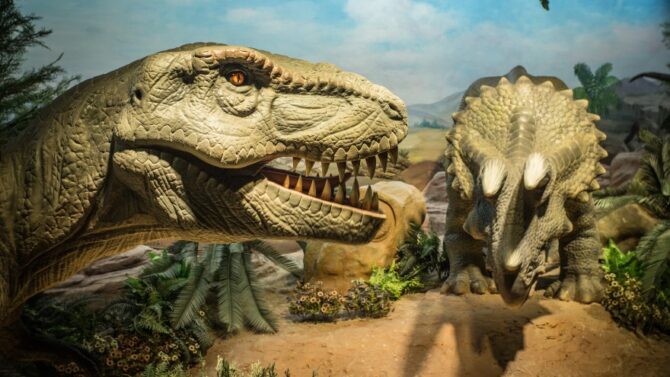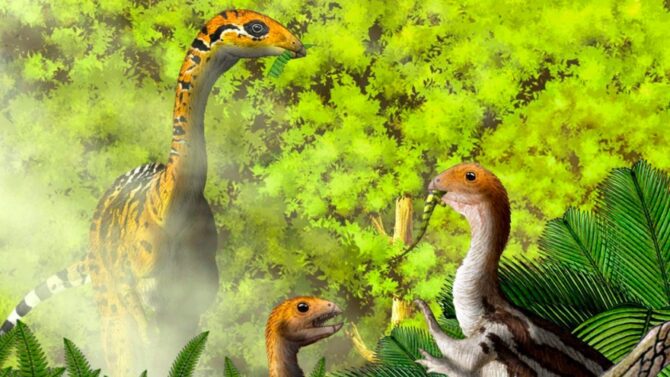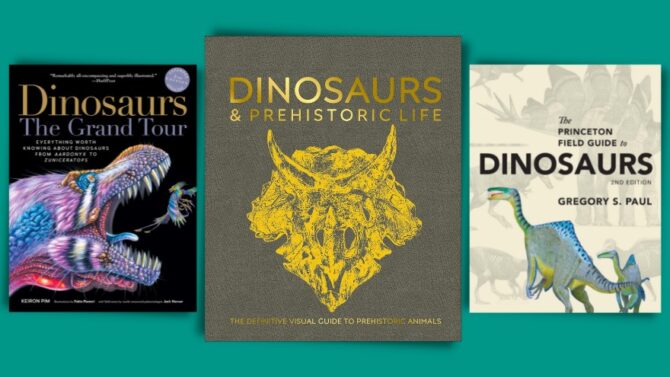Did you know that more than 11,000 dinosaur fossils have been unearthed in the world?
This entails that many species have been named—possibly up to 1,000—but you wouldn’t know that if you listened to the average conversation about dinosaurs.
Names like T-Rex and the velociraptor get thrown around, even amongst non-enthusiasts. This is because of their popularity.
Some dinosaurs became popular for a variety of reasons, the major being the media. They also have more fossils. Examples of the most popular dinosaurs include Tyrannosaurus Rex, triceratops, velociraptor, etc.
Let’s explore the top 10 most famous dinosaurs that ever lived. Read on to find out if your favorite is among them!
The Most Popular Dinosaurs that Roamed the Earth
1. Tyrannosaurus Rex

The Tyrannosaurus Rex lived during the Upper Cretaceous period, around 88 to 66 million years ago.
Its range was on what is now the western part of North America, on an island continent known as Laramidia.1
The first Tyrannosaurus skeleton was discovered by Barnum Brown in 1902.2
Unsurprisingly, the T-Rex topped this list, and it was crowned the king of dinosaurs.
Best-selling books and movies like the Jurassic Park franchise boosted its reputation, and there has been some coolness attached to it due to its name and fossil size.
Even its nickname—the tyrant king—inspires awe.
2. Velociraptor
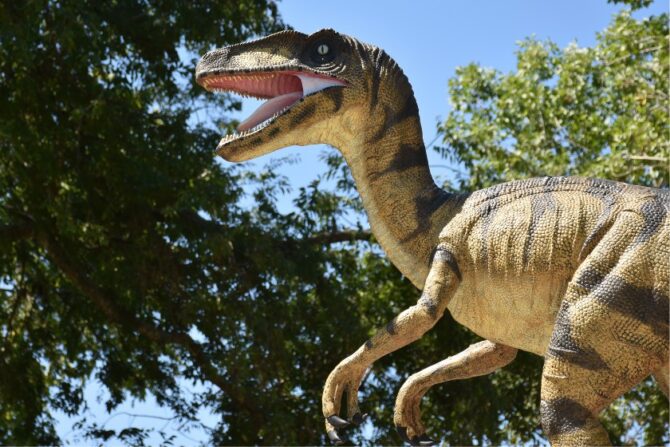
Velociraptors lived around 75 to 71 million years ago during the Late Cretaceous period, and its range is Asia.
Two species make up the velociraptor genus. This dinosaur was first discovered in 1983 by Peter Kaisen.
Both the Jurassic Park book and movie boosted the popularity of the velociraptor, though a different species was portrayed as the velociraptor.
The latter is smaller than its movie persona, looking more like a turkey. Its name means “swift thief” or “speedy thief.”
3. Triceratops
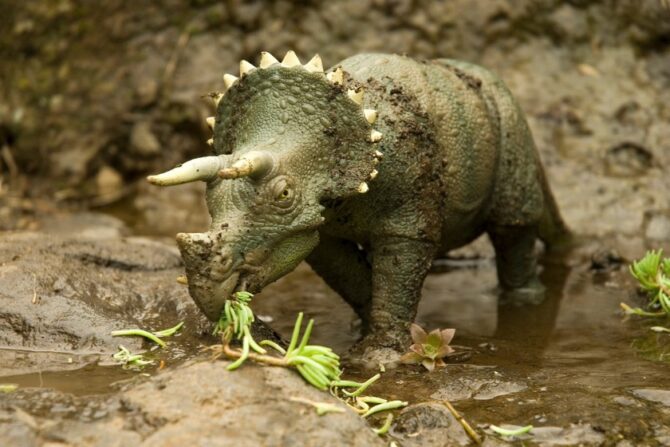
The Triceratops (three-horned face) is a genus of herbivorous dinosaurs that appeared during the Cretaceous period.
They lived about 68 million years ago in what is now known as North America.
It was first discovered by George Lyman Cannon in 1887 and was once thought to be a bison species.3
The Triceratops is an easily recognized creature due to its triple horns and the frill at the back of the head.
It might have been a gentle herbivore, despite its scary looks, but we can’t know for certain.
The horns were most likely for defense against predators and mating purposes.
4. Spinosaurus
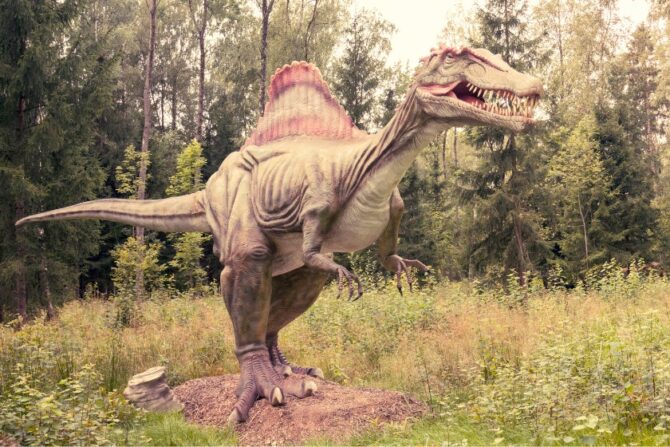
The Spinosaurus is a genus of dinosaurs characterized by an unusual spine shape.
It lived in what is now known as North Africa during the Late Cretaceous period, between 99 to 93.5 million years ago.
The first remains were discovered in Egypt in 1912. Sadly, it got destroyed in the 1st world war, but we’ve got more in the 21st century.4
The Spinosaurus has slowly increased in popularity, both from the Jurassic Park movies and recent discoveries that made the news.5
It is also the largest known carnivorous dinosaur, even bigger than the Tyrannosaurus Rex.
5. Stegosaurus
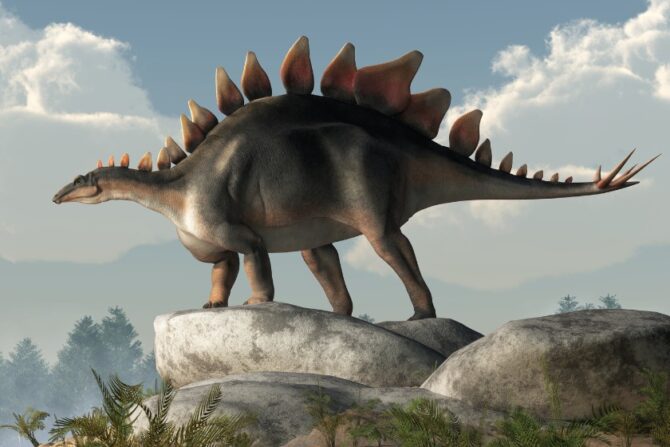
The Stegosaurus refers to a genus of herbivorous dinosaurs known for moving on four legs and the armored plates lined on their backs.
It existed during the late Jurassic period, dating around 155 and 145 million years ago.
It was first discovered in the United Kingdom, in 1984, and was described by Richard Owen.
The armored coat of the stegosaurus is possibly what makes it popular, especially after its appearance in Jurassic Park.
The popular view is that it used the spikes to protect itself from predators. Some also state that the spikes might have been brightly colored.
The popularity of this creature keeps increasing, with theme parks and children’s toys being inspired by it.
6. Archaeopteryx

The Archaeopteryx also goes by the alternative name Urgovel, a genus of dinosaurs very similar to birds.
At first, this creature was considered the oldest bird. That has since changed with recent discoveries.6
Regardless, the Archaeopteryx is very popular as a well-preserved artifact around the world.
Its unusual looks provoke many discussions, such as whether or not it can fly with its wings.
Its teeth and claws also make one wonder. Was this avian dinosaur harmless or something we would have been afraid of?
7. Brachiosaurus

The Brachiosaurus, as a term, refers to a genus of sauropod dinosaurs that existed during the late Jurassic period, around 154 to 150 million years.
It lived in what is now North America, and it is known for its long arms. It was first discovered in 1900 by Elmer S. Riggs in the United States.
The Brachiosaurus was one of the largest animals to have walked the earth. It owes part of its popularity to Jurassic Park but also gained the attention of people by its looks, especially its similarity to the giraffe.
8. Apatosaurus
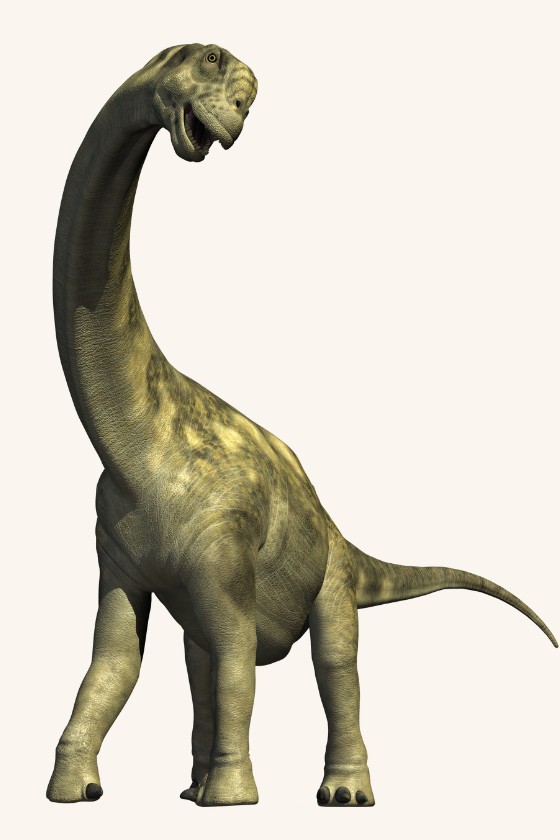
The Apatosaurus lived during the late Jurassic period, a genus that comprised herbivorous sauropod dinosaurs. They all stayed in what is now North America.
A name mix-up got it termed brontosaurus, which boosted its popularity. It was first described in 1877 by O.C Marsh.
Because it used to be called the brontosaurus, people associated it with The Flintstones, which helped its reputation.7
Its size and long neck were also good selling points to the public.
9. Dilophosaurus

Who would forget the poison-spitting dinosaurs from Jurassic Park? Of course, that was a movie myth, but the unusual attribute alone made the dilophosaurus unforgettable.8
This genus of theropods lived during the early stages of the Jurassic, around 193 million years ago.
The fossil was first discovered in 1942 by Sam Welles and was named Megalosaurus wetherilli.
That soon changed to Dipholosaurus in the 1970s.
Due to the movie, the dipholosaurus remains a popular species.
10. Allosaurus
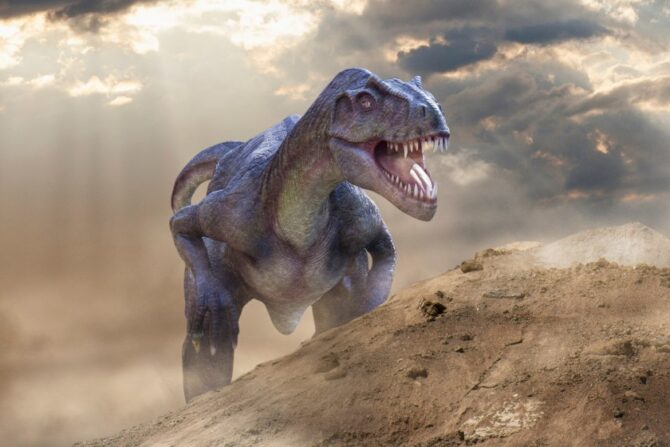
This creature is slightly similar to the Tyrannosaurus rex, but it is smaller, faster, and (surprisingly) more vicious.
It is a large dinosaur in and of itself, living during the late Jurassic period, about 155 to 145 million years.
It was discovered in 1877 in Colorado and was described by Othniel Charles Marsh.
The Allosaurus’s popularity skyrocketed soon after it was named, and even people who aren’t paleontologists or enthusiasts know of it. Its fossil size alone can draw in a crowd.
Final Thoughts
The majority of the most popular dinosaurs owe their post-mortem fame to Jurassic Park.
But asides from the movie, their fossil attributes and all we know about them are enough to keep them at the top of the dinosaur celebrity list.
References & Notes
- Dinosaurs of the Lost Continent. Scientific American.
- Tyrannosaurus rex Fossil. American Museum of Natural History.
- Triceratops. Britannica.
- Discovered: Rare Spinosaurus fossils. DW.
- Spinosaurus dinosaur ‘hunted underwater’, new research finds. BBC News.
- New Candidate for World’s First Bird. National Geographic.
- Brontosaurus. The Flintstones, Fandom.
- ‘Jurassic Park’ got almost everything wrong about this iconic dinosaur. National Geographic.
